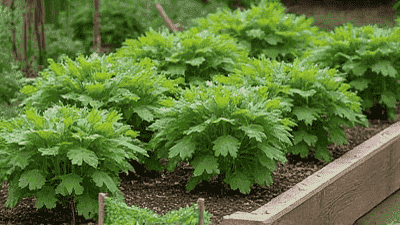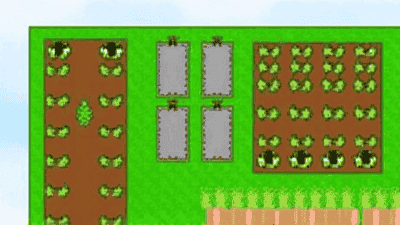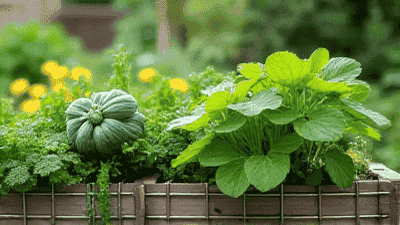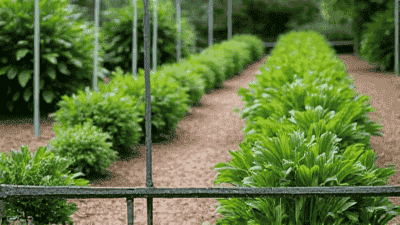How to choose a suitable location for a vegetable garden
Growing your own vegetables can be a rewarding and fulfilling endeavor. Whether you have a sprawling backyard or a small balcony, understanding how to choose the right location for your vegetable garden is crucial to your success. The site you select will impact the health and productivity of your plants, and therefore, careful consideration is necessary.

Understanding Vegetable Garden Requirements
Before diving into specific factors, it is essential to understand the basic requirements for growing vegetables. By grasping these needs, you can make informed decisions about your garden location.
Key Requirements for Vegetables
Sunlight: Most vegetables require at least six hours of direct sunlight each day to grow properly. Understanding how sunlight interacts with your chosen location will be imperative.
Soil Quality: Healthy soil is fundamental to vegetable growth. The chosen site should have good drainage, fertility, and structure to support root development.
Water Access: Easy access to water is essential for maintaining soil moisture, especially during dry spells. Consider how and where you will irrigate your garden.
Protection from Wind: Strong winds can damage delicate plants and lead to moisture loss. A suitable location should offer some protection from wind exposure.
Accessibility: Your garden should be convenient to access for planting, maintenance, and harvesting tasks. This aspect is especially crucial for continued engagement in gardening.
1. Evaluating Sunlight Exposure

Sunlight is one of the most critical factors to consider when choosing a location for your vegetable garden. Understanding the sunlight patterns in your area can help you find the best spot.
How to Assess Sunlight Exposure
Observe the Area: Spend some time observing how sunlight moves across your property throughout the day. Make note of areas that receive continuous sunlight and those that are shaded.
Use Tools: Consider using a sunlight calculator or smartphone app that tracks sun exposure patterns throughout the day. Tools like these can provide valuable insights into ideal planting sites.
Consider Seasonal Changes: Keep in mind that sunlight exposure can change with the seasons. Take note of how trees and structures may cast shadows during summer versus winter.
Types of Sunlight Exposure
When evaluating sunlight levels, classify potential garden sites into the following categories:
Full Sun: Areas that receive six or more hours of direct sunlight daily. Most vegetables thrive in full sun.
Partial Shade: Areas that receive four to six hours of sunlight. Some vegetables can still grow well in these conditions, though yields may vary.
Full Shade: Areas that receive less than four hours of sunlight. Most vegetables struggle to produce in these conditions. If you are limited to a shadier area, consider using shade-tolerant plants.
2. Analyzing Soil Quality
Soil quality is another critical consideration when choosing a garden location. The right soil supports healthy root systems and provides essential nutrients for plant growth.
Assessing Soil Quality
Soil Texture: Good garden soil should have a balanced texture, including clay, silt, and sand, which helps drain excess water while retaining necessary moisture.
Drainage: Check how water drains in the area. Poor drainage can lead to waterlogged soil and root rot. Conduct a simple drainage test by digging a hole and filling it with water. If water remains in the hole for an extended period, drainage may be an issue.
Nutrient Levels: Analyze the soil’s nutrient content using a soil testing kit. Essential nutrients include nitrogen, phosphorus, and potassium, as well as minor elements like calcium and magnesium. If nutrient levels are low, you may need to amend the soil with organic matter or fertilizers.
Soil pH: A proper pH level—generally between 6.0 and 7.5—is essential for vegetable growth. Test your soil's pH and take corrective measures as necessary, such as adding lime to raise pH or sulfur to lower it.
Improving Soil Quality
If your chosen location has poor soil quality, consider the following methods to amend it:
Composting: Adding organic compost enriches soil texture and provides nutrients. Compost can be made from kitchen scraps, yard waste, and other organic materials.
Raised Beds: If soil quality is severely lacking or if drainage is a concern, consider building raised garden beds. These allow you to control the soil quality, drainage, and growing conditions.
3. Ensuring Water Access

Vegetable gardens require consistent moisture to thrive. Choosing a location with convenient access to water is crucial for efficient garden maintenance.
Factors to Consider for Water Access
Proximity to Water Source: Ensure that your garden is within a reasonable distance from a water source, such as a garden hose, faucet, or rain barrel.
Irrigation Options: Consider implementing an irrigation system, such as drip irrigation or soaker hoses, to minimize labor and ensure efficient watering.
Slope and Drainage: Evaluate the slope of your property, as sloped areas might drain water quickly and lead to dry soils. Choose a flat area where water won't run off too rapidly.
4. Protection from Wind and Elements
Wind exposure can be detrimental to vegetable gardens, particularly for young plants and newly established seedlings. Selecting a location that offers protection from the elements will help ensure a successful garden.
Strategies for Wind Protection
Natural Barriers: Use trees, shrubs, fences, or trellises as windbreaks. These elements can effectively shield your garden from strong winds while adding aesthetic appeal.
Positioning: Place your garden away from open, exposed areas where wind can freely sweep through. Consider the location of any structures, such as your home or garage, that may provide natural wind protection.
Row Covers: If wind is a consistent issue, consider using row covers to protect delicate plants. These lightweight fabric covers help shield plants from wind and harsh weather while allowing sunlight to penetrate.
5. Ensuring Accessibility

Your vegetable garden should be easily accessible for planting, maintaining, and harvesting tasks. Thoughtful planning and design will facilitate easier work, ensuring you remain involved in your garden.
Key Considerations for Accessibility
Pathways: Create clear pathways leading to and within your garden. Consider using mulch, gravel, or stepping stones to define these paths.
Proximity to Your Home: Locate the garden within close proximity to your kitchen or patio for convenience when harvesting and cooking fresh produce.
Tools and Supplies: Make sure your garden location allows you to easily store and access gardening tools, supplies, and equipment.
6. Local Climate Considerations
Climate plays a significant role in the success of vegetable gardening. Understanding your local climate conditions will help you select the right location to maximize growth potential.
Factors to Evaluate
Temperature Zones: Familiarize yourself with your USDA hardiness zone, which provides information about the average temperatures and frost dates in your area.
Wind and Rain: Assess the average wind speeds and rain patterns in your region. Choose a location that can withstand your typical weather conditions while providing adequate drainage during heavy rain.
Microclimates: Be aware of microclimates within your property. Areas near walls, sidewalks, or fences may experience different temperatures and moisture levels than other areas.
7. Planning for Future Growth
As you consider location options for your vegetable garden, think about the potential for future growth and expansion. A well-planned garden will accommodate your needs as they evolve.
Long-Term Considerations
Space for Crop Rotation: If you plan to grow various crops seasonally, allow room for crop rotation to maintain soil health and minimize pest issues.
Expansion Opportunities: Consider how much space you might need in the future. If you foresee your garden expanding, choose a location that allows for easy growth.
Companion Planting: Plan the layout of your garden to take advantage of companion planting. Some plants benefit from being grown near one another, improving overall health and pest resistance.
Conclusion
Choosing a suitable location for your vegetable garden involves careful consideration of numerous factors, including sunlight exposure, soil quality, water access, and climate conditions. By understanding and addressing these elements, you can create an environment that fosters healthy plant growth, maximizes yields, and enhances your gardening experience.
As you embark on your gardening journey, remember that each garden is unique. Take the time to observe your surroundings, assess your space, and make informed decisions that align with your goals, preferences, and resources. With proper planning and dedication, your vegetable garden can flourish and provide you with a bountiful harvest for years to come.
